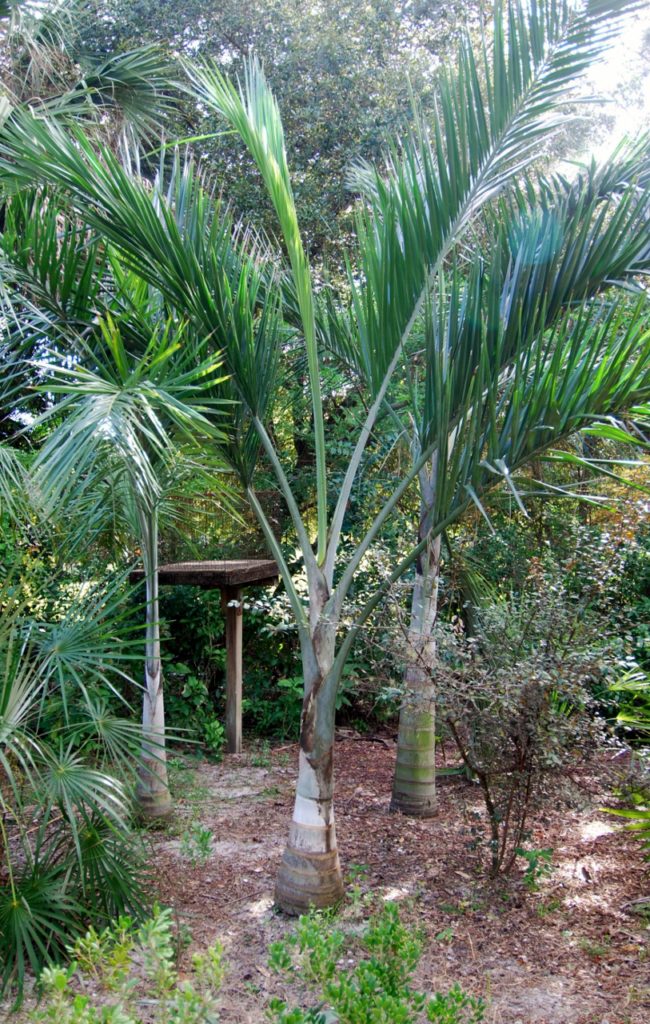
Buccaneer Palm
Pseudophoenix sargentii
Buccaneer Palm, which is also called Sargent’s Cherry Palm, was almost eaten to extinction when the hearts were collected for food years ago. It is only found wild on Long Key and Elliot Key although it is being reintroduced to other areas of its natural range and is fairly common in cultivation.
Moderate salt air and short periods of storm surge flooding are tolerated. Buccaneer Palm is very drought tolerant. Rich, dry soil and full sun are needed for best growth.
The silvery foliage and trunk and bright orange fruit make this an outstanding addition to the landscape. Buccaneer Palm does well in narrow spaces due to its slow growth and leaves that point upward and stay close to the plant.
We have planted ours over the septic drain field along with other key palms and Sea Lavender. These plants tolerate the layer of gravel and have not caused problems with drainage.
Buccaneer Palm or Sargent’s Cherry Palm belongs in the front yard where it will bring positive comments. A large mass of these palms is outstanding and mimics what can be found in nature. If you are a palm lover, try a mix of Buccaneer Palms with the native Thatch Palms, Lignum Vitae, Coontie, Beach Creeper, Joewood, Chapman’s Cassia and low wildflowers and groundcovers.
The cage in the back is actually a painted bunting feeder where the birds enter through one inch by two inch rectangles (rabbit hutch wire) to pick white millet off the surface. Larger birds and squirrels can’t get in.